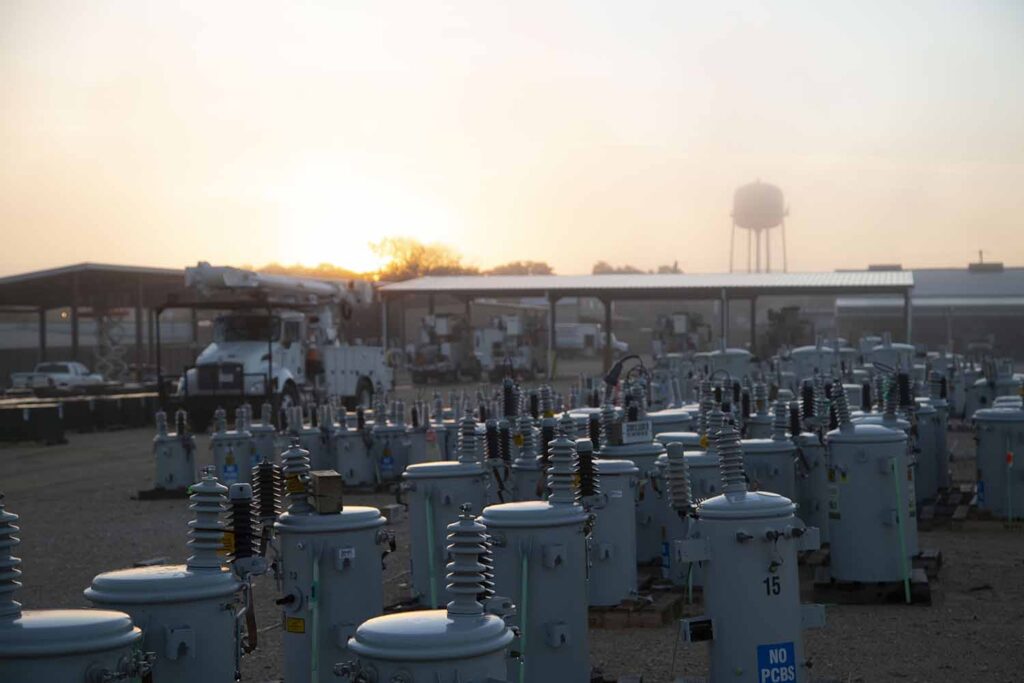
The Department of Energy has finalized new energy efficiency standards for distribution transformers, giving manufacturers more time to meet them and easing requirements that would have forced the use of less durable, hard-to-find amorphous steel in most transformers.
The final rule reflects NRECA’s advocacy priorities to maintain use of grain-oriented electrical steel and to allow manufacturers more time for compliance to help keep the focus on increased output to meet electric cooperatives’ demand for transformers. NRECA took this message to DOE, the White House and Congress, culminating in congressional requests to change the proposal, bipartisan legislation and the final rule issued on April 4.
The standard will take effect in 2029, providing an additional two years for compliance compared to DOE’s proposal.
NRECA leaders said the revised proposal is “much improved” from DOE’s initial plan, which would have made it difficult for co-ops to get the essential equipment they need to modernize their systems and help communities recover from disasters. Co-ops are already struggling to get enough transformers due to ongoing supply chain delays.
“As the nation depends on electricity to power more of the economy, a stable distribution transformer supply chain is essential to maintaining reliability and meeting growing demand,” said Louis Finkel, NRECA senior vice president for Government Relations.
“DOE’s final rule is much improved over its proposal, which would have upended the entire market for distribution transformers at a time when manufacturers could not keep up with demand for this critical equipment.”
The department’s updated efficiency standard will force some distribution transformer manufacturers to eventually switch from using grain-oriented electrical steel to amorphous steel, but it will require only about 25% of them to do so rather than nearly all as initially proposed. There is only one domestic supplier of amorphous steel in the U.S.
Most of the distribution transformers used by electric co-ops for residential or lower load settings will still be made with grain-oriented electrical steel, a more plentiful and durable resource for this key piece of equipment for keeping the lights on.
A large portion of distribution transformers used for some commercial loads, as well as certain new electric vehicle charging sites, will require amorphous steel.
NRECA had urged DOE to reconsider its proposal to shift nearly the entire market to amorphous core transformers in comments last year, outlining concerns about the material’s core durability, its limited availability and the utility sector’s operational and equipment burdens to make the change.
“It was also a serious risk that the lone domestic supplier of grain-oriented electrical steel would leave the market, harming the potential outlook for more domestic large power transformer manufacturing,” said Stephanie Crawford, NRECA regulatory affairs director. “DOE’s final rule now walks back that potential risk, hopefully leading to more domestic investment in grain-oriented electrical steel supply.”
“The final rule provides stability for most of the market, while affording a more gradual shift toward tighter efficiency standards for transformers used to meet larger commercial and certain electrification loads,” said Finkel. “We will work closely with our members, manufacturers and suppliers to ensure implementation does not further disrupt an already strained supply chain.”
Cathy Cash is a staff writer for NRECA.